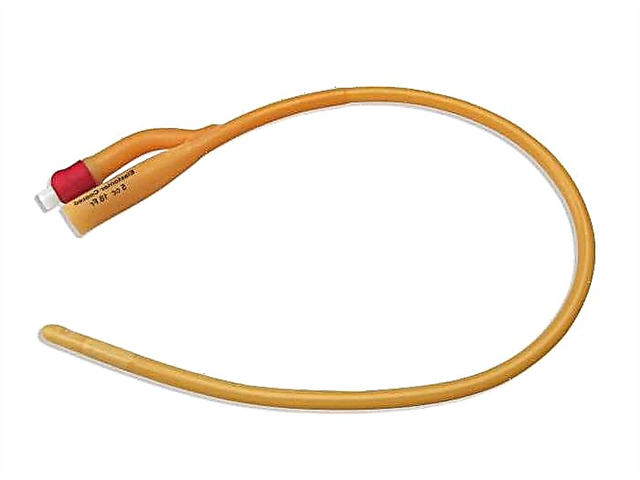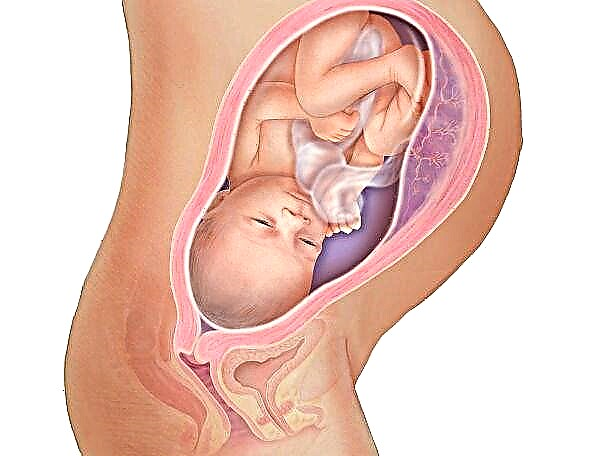In the era of fast food and electronic gadgets, obesity affects a third of the world's population. It is only natural that an inert lifestyle and an unhealthy diet are the main factors in the development of this condition in adults. However, more and more cases of overweight in young children are recorded. In such a situation, the diagnosis "paratrophy" is made. What are the causes of this pathology? How is it treated?
Everyone loves to see a chubby child. Huge cheeks, wrinkles in the skin and many places to pinch make babies so cute. But babies who are overweight actually have a serious disorder called paratrophy.
Often the above condition of infants is referred to as obesity. But from a medical point of view, this statement is incorrect. Indeed, paratrophy in children is a pathology characterized by increased body weight. But in a child in the first three years of life, the disorder has certain characteristics that are important to consider when diagnosing and developing a treatment regimen for a small patient.
In this way, paratrophy - an eating disorder of a chronic nature, pathology is accompanied by a violation of metabolic functions in the body, it is characterized by excess weight and strong hydrolability (instability of water metabolism) of tissues.
An anomaly is diagnosed when the weight of the child exceeds the growth indicators for age by more than 10% of the proper value. Most often this occurs at the age of 3-5 months. Six months later, the baby's symptoms of the disorder will be pronounced. Often, paratrophy in infants accompanies lymphatic-hypoplastic diathesis (LGD).

Why does paratrophy develop
Endogenous factors
- Metabolic disorders: too fast absorption and assimilation of nutrients. Constitutional tendency to accumulate fat.
- Hormonal disorders (increase in insulin, growth hormone - growth hormone produced by the pituitary gland).
- Functional impairment of the hypothalamus (part of the brain), which causes an imbalance in the feeling of appetite and satiety.
- Increased tissue hydrophilicity (water is retained in the body).
Exogenous factors
- Low physical activity infant and insufficient exposure to air due to illiterate child care.
- Family social conditions (poor financial security, low parental culture in matters of sanitation).
Factors related to feeding
- Unbalanced diet: the proportions of the main components (carbohydrates, fats, proteins) are violated, and there is a lack of vitamins due to the predominance of milk and bakery products in the children's diet.
- Excess food (the calorie content of the consumed product exceeds the energy consumption of the baby) is due to the increased amount of supplementary feeding with mixed feeding, and with artificial feeding - due to frequent meals and increased portions.
It has been noticed that paratrophy develops in children living in families with a “special view” on nutrition and daily routine.
More often in such families, one or both parents are overweight, one-sided eating with a selected set of foods is revealed, and eating foods with a high energy value in the afternoon.
Prolonged overfeeding and a sedentary lifestyle of a child cultivated in families is an inevitable way of forming the next stage of pathology - obesity.

What happens in the body with paratrophy.
Pathogenesis is based on the genetically determined liposynthetic direction of metabolism (accelerated absorption of fats in the intestine and their increased assimilation).
With an excessive intake of fat, the assimilation of protein decreases, acidosis develops (a violation in the body of the acid-base balance in favor of acidity), the level of ammonia, phosphates and ketone bodies in the urine increases, the excretion of magnesium and calcium, fatty acid salts decreases, the absorption and content of phosphorus decreases, and calcium in the bones.
When overfeeding with carbohydrate foods, carbohydrate, protein and lipid types of metabolism suffer, the work of internal organs is disrupted.
How to recognize paratrophy
Parents rarely see a doctor about paratrophy, considering it a variant of the "good" development of the child. Starting from infancy, children suffer from emotional tone: there is slowness, lack of exercise, an imperturbable look, or such patients, on the contrary, are restless, irritable, whiny.
Notable symptoms of this condition are the characteristic appearance of the child:
- thick folds on the arms, legs, chin;
- an enlarged abdomen in comparison with the chest;
- short neck.
Also observed:
- decreased muscle tone;
- loss of skin elasticity;
- pallor, dryness of the skin;
- rash in the diaper area and in the folds of the skin;
- sleep disturbance;
- rickets;
- predisposition to allergic reactions.
Frequent functional disorders from the gastrointestinal tract and other systems:
- persistent regurgitation;
- delay in the act of defecation;
- frequent diseases of the respiratory system;
- otitis media;
- urinary tract infections.

Pathology degrees
There are 3 degrees of the disease:
- the first is diagnosed if the child is 10 to 20% overweight;
- the second - when the excess weight is 25-35%;
- the third is characterized by indicators of 40-50%.
At the initial stage of the disease, babies have thick folds in the hip and chest area. In the second and third stages, excess weight is distributed throughout the body.
Types of paratrophy
First type the disorder involves weight gain as a result of the child's excessive intake of protein. The difficulty of preventing and treating this type of pathology is that adults usually turn to a specialist very late. This is due to the fact that at the initial stage of paratrophy outwardly the child looks quite healthy, "a well-fed hero."
Parents of these babies enjoy the babies' great appetite and calm demeanor (which is actually a lack of mobility due to their heavy weight). But without changing the diet, the child's condition gradually deteriorates.
In this case, concomitant disorders arise, in particular, disturbances in the work of the gastrointestinal tract, the load on the kidneys and liver increases. Without proper treatment, this disorder progresses rapidly, contributing to the appearance of rickets, acidosis, allergies, and anemia.
Second type develops as a result of overfeeding with carbohydrate products (cereals, juices, bakery and confectionery products). In this condition, there is a strong decrease in the elasticity of the skin, there is pallor, swelling and "marbling" of the skin. The child has frequent loose stools and a tendency to vomit. This type of paratrophy causes impaired absorption of nutrients and, therefore, causes hypovitaminosis, hypocalcemia, rickets.

The main ways of diagnosis
The purpose of diagnostic measures is to identify the main factor that provoked the onset of paratrophy.
Usually, the doctor focuses on the clinical manifestations of pathology, as well as on the identification of body mass index.
Table 1. Additional research methods.
| Study type | Results with paratrophy |
| General blood analysis | Signs of anemia and B 12 deficiency, ESR above normal. |
| Blood chemistry | Reduced levels of phospholipids and iron, high cholesterol. |
| Glucose tolerance test | Clear tracing of carbohydrate metabolism disorders. |
| Coprogram | With a protein disorder - dense, putrid, shiny (greasy-soapy) feces, neutral fat, putrefactive microflora are often detected. With a carbohydrate disorder - feces are dense, yellow or brown, extra- and intracellular starch is often found, iodophilic microflora |
Treatment
Treatment should focus on:
- clarification and elimination of possible causes of the disorder;
- organization of a rational diet that does not slow down the physical development of the child;
- organization of an active motor regime;
- identification and elimination of concomitant types of pathology.
The set of therapeutic and organizational actions for paratrophy is directed to a greater extent not at the child, but at his family environment
Parents' motivation for a healthy lifestyle is the key to the child's recovery!
The daily regimen is aimed at a significant increase in the motor activity of the child and his parents, maximum stay in the fresh air, active walking and gymnastics, swimming, for older children - participation in outdoor games, running, aerobic-isotonic exercises, cycling, age groups of sports sections.

Diet therapy is the main method of treating paratrophy
The principles of diet therapy are simple.
- Continue breastfeeding.
- Regulate the time of eating and the volume - more frequent, for 2-3 episodes, feeding in small portions.
- Do not reward your child with "tasty" food.
- Avoid snacking on the street, while watching TV, or similar situations.
- Reception of more high-calorie foods (cereals, juices) should be carried out in the first half of the day.
- Preference is given to mixed protein-vegetable food (mashed potatoes from different varieties of vegetables, meat, kefir, cottage cheese), a complete rejection of bakery products.
- The calculation of the required amount of protein is performed on the actual weight, and fats, carbohydrates and calories - on the due (in accordance with the optimal-minimum needs of the child).
- It is advisable to refuse from night feedings, starting from the second half of life.

How to prevent the development of paratrophy?
Prevention is about motivating family members to:
- healthy lifestyle;
- active motor regime;
- optimal nutrition;
- long-term preservation of breastfeeding.
Dispensary observation of children with paratrophy is carried out by a pediatrician, according to indications, consultations of an endocrinologist, neurologist, ophthalmologist are prescribed.
The criteria for recovery are age-appropriate physical and neuropsychic development, the absence of functional abnormalities from the internal organs.
Conclusion
When following the recommendations for optimizing the child's lifestyle and nutrition, the prognosis is favorable. However, in 20 - 40% of cases, paratrophy eventually transforms into obesity.



